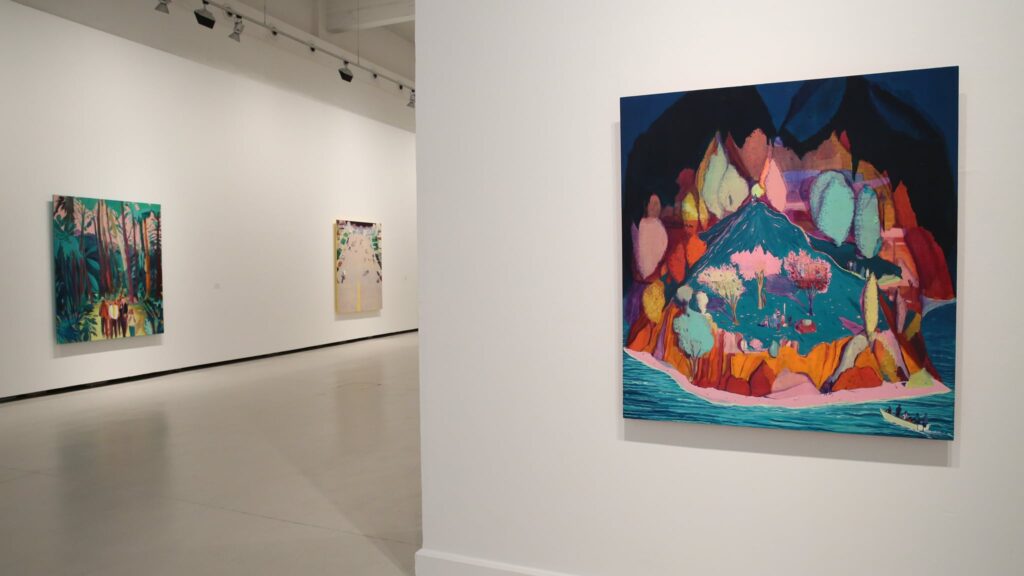En Polisemia seguimos colaborando con el CAC Málaga en la traducción al inglés de los textos de su nueva exposición After The Gold Rush, que presenta por primera vez en España la obra del artista franco-americano Jules de Balincourt. Comisariada por Helena Juncosa, la muestra reúne una selección de cuarenta pinturas sobre tabla realizadas en la última década de su producción artística, y se puede ver hasta el 30 de mayo.
After The Gold Rush alude a la experiencia infantil del artista como emigrante a California desde Francia.
Paisajes físicos y emocionales que muestran mundos intrigantes y coloridos, sus pinturas oscilan entre la utopía y la distopía, lo real y lo imaginario, la naturaleza frente al impacto de la arquitectura en el paisaje, el ocio frente al deber del trabajo o lo local frente a lo global.
Trabaja en varias obras a la vez y directamente sobre la madera –que prefiere al lienzo– sin bocetos preliminares, de forma puramente intuitiva, aplicando sucesivas áreas de color para crear sus composiciones. Combina elementos del arte pop, la figuración y la abstracción en un espacio onírico. Los colores así como la presencia de la naturaleza recuerdan a cierto primitivismo de principios de siglo XX, al tiempo que ofrece una meditación sobre el significado de la vida contemporánea.
Continuing our partnership with the CAC Málaga, we provided English translations of the texts for its latest exhibition, After the Gold Rush, the first presentation in Spain of the work of Franco-American artist Jules de Balincourt. Curated by Helena Juncosa, the show consists of forty selected paintings on panel made in the last decade of his career and will be on view until 30 May.
The title After the Gold Rush alludes to the artist’s experience of moving from France to California as a child.
Physical and emotional landscapes that depict intriguing, colourful worlds, his paintings hover between utopia and dystopia, the real and the imaginary, nature and the impact of architecture on the landscape, leisure and work obligations, and the local and the global.
De Balincourt works on several pieces at once and paints directly on wood—which he prefers to canvas—without preparatory sketches, in a purely intuitive way, applying successive areas of colour to create his compositions. He combines elements of Pop art, figuration and abstraction in a dreamlike setting. The colours and the presence of nature are somewhat reminiscent of early 20th-century primitivism, but they also offer a meditation on the meaning of contemporary life.

